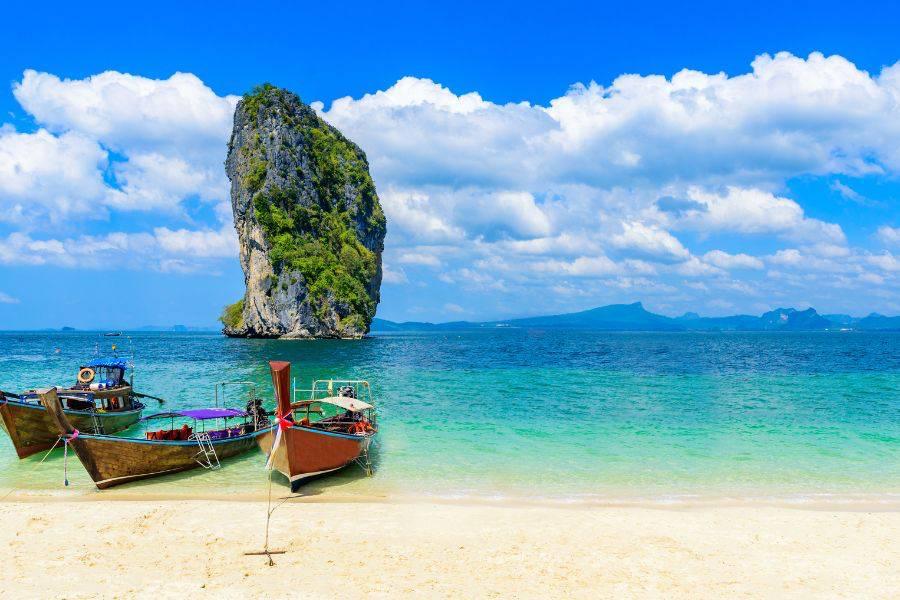Introduction
Welcome to Krabi, one of Thailand’s most breathtaking provinces, known for its emerald mangrove forests, dramatic limestone cliffs, and world-renowned beaches. However, this tropical paradise faces growing environmental challenges due to the surge in global tourism. This comprehensive guide offers practical, eco-conscious travel tips to help you explore Krabi sustainably.
From choosing the right eco-friendly accommodations to engaging in low-impact activities and supporting the local community, this guide empowers you to make responsible choices that protect Krabi’s natural beauty for future generations.
1. Why Sustainable Tourism Matters in Krabi
Krabi’s Environmental Vulnerabilities
Krabi’s stunning natural landscapes—including beaches, coral reefs, and mangrove forests—are increasingly threatened by over-tourism. Wildlife habitats are under pressure, and delicate ecosystems are at risk of degradation. Adopting sustainable travel practices is vital to protect these treasures and ensure their survival.
Thailand’s National Sustainability Strategy
Thailand has embraced the Bio-Circular-Green (BCG) economy model, promoting environmental consciousness across various sectors, including tourism. The government aims for carbon neutrality by 2040, with local projects in Krabi supporting blue carbon storage in seagrass beds and mangrove forests.
2. Eco-Friendly Accommodations in Krabi
How to Identify Truly Sustainable Hotels
When booking your stay, look beyond marketing. Choose eco-conscious accommodations that use:
- Locally sourced materials
- Energy-efficient appliances
- Greywater recycling systems
- Organic toiletries and non-toxic cleaners
- Certifications or clear sustainability practices
Top Eco-Friendly Resorts in Krabi
Here are some highly rated green resorts that walk the talk:
- Aonang Eco Inn Krabi – Provides refillable bottles and eco-packaging.
- Anana Ecological Resort Krabi – Offers complimentary eco-transport and low-carbon amenities.
- Pakasai Resort – Uses local materials, energy-saving systems, and water recycling.
- Varana Krabi Hotel – Follows the BCG model with electric tuk-tuks and recycled resources.
- Venice Krabi Villa Resort – Farm-to-table cuisine, rainwater harvesting, and cultural preservation.
- Ban Sainai Resort – Part of the Zero Carbon Resort Project with minimal environmental impact.
- Rayavadee – SHA Extra Plus – Operates a zero-discharge water system and runs artificial reef programs.
- Aonang Princeville Villa Resort & Spa – Marine and forest conservation leader with certified eco-projects.
- Islanda Hideaway Resort – Traditional design using local materials and an organic garden on Klang Island.
Consider Eco-Farms for Deeper Immersion
Staying at an eco-farm allows for hands-on experiences with sustainable agriculture, access to fresh local produce, and authentic rural Thai hospitality.
3. Sustainable Transportation in Krabi
Getting Around Responsibly
Opt for low-emission transport options:
- Electric vehicles: Increasingly available for buses, tuk-tuks, and taxis
- Bicycles: Explore via Krabi Eco Cycle or resort-provided bikes
- Eco-transfers: Offered by resorts like Anana Ecological Resort
These alternatives reduce your carbon footprint and let you experience the region at a slower, more intimate pace.
4. Eco-Conscious Activities and Tours
Nature-Based Experiences with Minimal Impact
Connect with Krabi’s environment through low-impact adventures:
- Mangrove kayaking (e.g., Ao Thalane Kayak Centre)
- Nighttime wildlife tours
- Bird and snake watching via longtail boats
- Bioluminescent paddle boarding
Ethical Wildlife Encounters
Avoid exploitative animal tourism. Choose sanctuaries like Ao Nang Elephant Sanctuary, which rescues and rehabilitates elephants in ethical, open environments.
Support Community-Based Tourism
Engage in volunteer tourism or join beach cleanups and coral restoration initiatives that support local conservation efforts.
Book Responsible Tour Operators
Select agencies like Krabi Spesialisten, known for their:
- Zero single-use plastic policy
- Sustainable transport options
- Community-focused tours
Always research operator credentials and read eco-certification details before booking.
5. Explore Krabi’s Hidden Eco-Gems
Off-the-Beaten-Path Attractions
Go beyond the typical tourist trail to discover Krabi’s lesser-known natural and cultural sites:
- Ao Luk Caves & Mangroves – Ancient cave paintings and burial sites
- Thapom Klong Song Nam Park – A unique freshwater-seawater ecosystem
- Tab Kak Hang Nak Trail – A rewarding jungle hike with panoramic views
- Diamond Cave & Princess Lagoon – Mysterious caves and hidden lagoons
- Guan Yin Temple – A serene mountaintop alternative to crowded temples
- Local Temples & Krabi Town – Experience authentic culture, street food, and live music
These attractions offer tranquil escapes and help distribute tourist income more equitably across the region.
6. Challenges Facing Sustainable Tourism
The Threat of Greenwashing
Some businesses falsely promote themselves as “eco-friendly.” To avoid falling for greenwashing:
- Look for transparent practices
- Check third-party certifications
- Read honest traveler reviews on sustainability claims
Obstacles to Implementation
- High operational costs
- Lack of access to green technology
- Enforcement of environmental laws
Small businesses may struggle, so supporting verified local efforts is key.
Demand for Measurable Impact
The industry must improve data transparency around:
- Carbon emissions
- Waste reduction
- Water conservation
Tourists and travel companies alike benefit from quantifiable sustainability goals.
7. Practical Tips for Eco-Conscious Travelers
How You Can Travel Responsibly
- Bring a reusable water bottle
- Avoid single-use plastics
- Choose ethical accommodations and tours
- Respect local customs and dress codes
- Buy locally made souvenirs and food
- Participate in community-based initiatives
Wildlife Spotting Tips
- Best wildlife activity time: Half-moon nights with light rain
- Explore mangrove edges and leaf-littered trails
- Watch for nocturnal species like snakes, spiders, and mammals
8. The Future of Eco-Tourism in Krabi
A Vision for Long-Term Sustainability
Krabi’s leaders are investing in:
- Sea-level rise mitigation
- Andaman Sea restoration
- Mangrove planting projects
- Environmental education for locals
These efforts, alongside traveler support, shape a more resilient and sustainable tourism future.
Conclusion: Be a Force for Good
Krabi’s ecological and cultural beauty deserves our care. As travelers, we hold the power to preserve this paradise. By choosing eco-conscious experiences, supporting local communities, and traveling with intention, we help shape a better, greener future for Krabi.
Have sustainable travel tips or stories to share? Leave a comment and inspire others to travel responsibly in Thailand and beyond.
